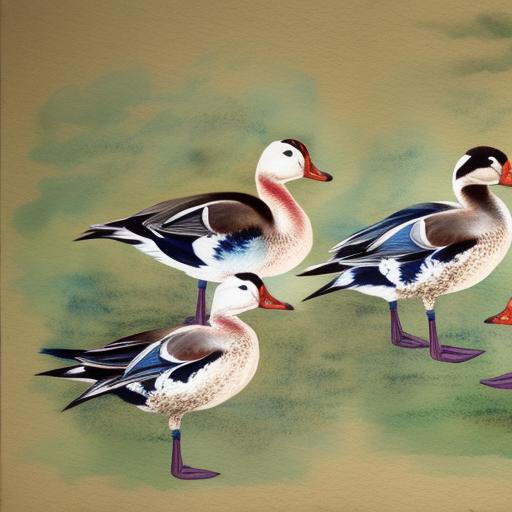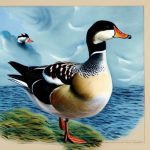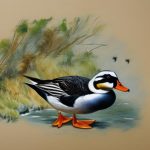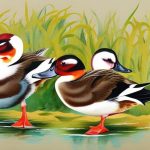Non-flying duck breeds are a unique and fascinating group of waterfowl that have evolved to be flightless. While most ducks are known for their ability to fly, there are several breeds that have lost this capability over time. These non-flying ducks are often kept for their ornamental value, as well as for their meat and eggs. They are also popular for their calm and friendly demeanor, making them great additions to backyard flocks and small farms. In this article, we will explore the characteristics, popular breeds, care and housing, benefits, and challenges of keeping non-flying ducks.
Key Takeaways
- Non-flying duck breeds are a unique and interesting option for poultry enthusiasts.
- Non-flying ducks are known for their calm and friendly nature, making them great for backyard settings.
- Popular non-flying duck breeds include the Pekin, Muscovy, and Indian Runner ducks.
- Care and housing for non-flying ducks requires a secure enclosure with access to water for swimming and foraging.
- Keeping non-flying ducks can provide benefits such as pest control, egg production, and companionship, but also comes with challenges such as predator protection and proper diet management.
Characteristics of Non-Flying Ducks
Non-flying duck breeds are typically larger and heavier than their flying counterparts. They have shorter wings and larger bodies, which make them less aerodynamic and unable to sustain flight. These ducks have adapted to a more terrestrial lifestyle, spending most of their time on land or in the water. They are excellent swimmers and foragers, using their strong legs and webbed feet to navigate through ponds and marshes in search of food. Non-flying ducks also have a calm and gentle temperament, making them easy to handle and interact with. They are known for their social nature and often form close bonds with their human caretakers. Additionally, non-flying ducks come in a variety of colors and patterns, adding to their appeal as ornamental birds.
Non-flying ducks are also known for their excellent egg-laying abilities and delicious meat. While they may not be as prolific flyers as other duck breeds, they make up for it with their productivity in the egg department. Non-flying ducks are also known for their hardiness and adaptability to various climates, making them suitable for a wide range of environments. Overall, these ducks are a unique and valuable addition to any farm or homestead.
Popular Non-Flying Duck Breeds
There are several popular non-flying duck breeds that are favored by duck enthusiasts and small-scale farmers. One of the most well-known non-flying duck breeds is the Indian Runner duck. This breed is characterized by its upright posture and distinctive long, slender body. Indian Runner ducks are excellent layers, producing large white eggs and are known for their comical and entertaining behavior. Another popular non-flying duck breed is the Khaki Campbell. This breed is prized for its exceptional egg-laying abilities, with hens laying up to 300 eggs per year. Khaki Campbells are also known for their calm and friendly disposition, making them a favorite among backyard duck keepers.
The Buff Orpington duck is another popular non-flying breed, known for its beautiful buff-colored plumage and friendly nature. Buff Orpingtons are dual-purpose ducks, valued for both their eggs and meat. They are also known for their cold-hardiness, making them well-suited for colder climates. Other popular non-flying duck breeds include the Saxony, Silver Appleyard, and Welsh Harlequin. Each of these breeds has its own unique characteristics and qualities that make them valuable additions to any flock.
Care and Housing for Non-Flying Ducks
Non-flying ducks require similar care and housing as their flying counterparts, with a few additional considerations due to their inability to fly. When it comes to housing, non-flying ducks need a secure enclosure that provides protection from predators and the elements. This can be a traditional coop or a predator-proof pen with access to water for swimming and foraging. It’s important to provide ample space for non-flying ducks to roam and explore, as they are active birds that enjoy spending time outdoors.
In terms of diet, non-flying ducks require a balanced diet that includes a commercial waterfowl feed, fresh water, and access to forage. It’s important to provide a diet that meets their nutritional needs, especially during the breeding season or when they are laying eggs. Non-flying ducks also need access to clean water for swimming and bathing, as well as regular grooming to keep their feathers in good condition.
Benefits of Keeping Non-Flying Ducks
There are numerous benefits to keeping non-flying ducks on a farm or homestead. One of the main benefits is their excellent egg-laying abilities. Non-flying duck breeds are known for their high egg production, making them a valuable source of fresh eggs for the household or for sale. Additionally, non-flying ducks are valued for their meat, which is lean and flavorful. They are also known for their calm and friendly demeanor, making them great pets and easy to handle.
Non-flying ducks are also excellent foragers and can help control pests in the garden or on the farm. They eat a variety of insects, slugs, and other pests, making them a natural form of pest control. Non-flying ducks also produce nutrient-rich manure that can be used to fertilize gardens and crops. Overall, non-flying ducks are valuable additions to any farm or homestead due to their productivity, adaptability, and friendly nature.
Challenges of Keeping Non-Flying Ducks
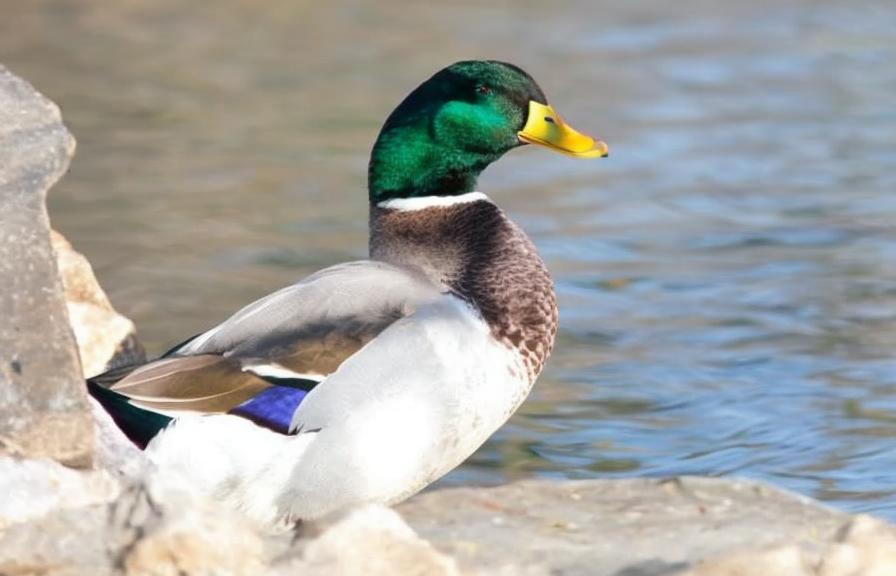
While there are many benefits to keeping non-flying ducks, there are also some challenges to consider. One of the main challenges is providing adequate protection from predators due to their inability to fly away from danger. It’s important to have secure housing and fencing to keep non-flying ducks safe from predators such as foxes, raccoons, and birds of prey.
Another challenge is managing their water needs, as non-flying ducks require access to clean water for swimming and bathing. This can be more challenging in dry or arid climates where water may be scarce. Additionally, non-flying ducks can be messy birds, especially when it comes to water and mud. It’s important to provide regular maintenance and cleaning of their living quarters to ensure a healthy environment for the ducks.
Conclusion and Considerations for Non-Flying Duck Ownership
In conclusion, non-flying duck breeds are a unique and valuable addition to any farm or homestead. They offer numerous benefits such as high egg production, delicious meat, natural pest control, and friendly companionship. However, there are also challenges to consider such as predator protection and managing their water needs. Overall, non-flying ducks are a rewarding and enjoyable species to keep for those who are willing to provide the necessary care and attention they require.
Before deciding to keep non-flying ducks, it’s important to research the specific needs of the breed you are interested in and ensure that you have the appropriate housing and resources available. It’s also important to consider local regulations and zoning laws regarding keeping ducks on your property. With proper care and management, non-flying ducks can thrive and provide years of enjoyment for their owners while contributing to the overall sustainability of the farm or homestead ecosystem.
If you’re interested in learning more about breeds of ducks that don’t fly, be sure to check out Poultry Wizard’s article on the topic. Understanding the characteristics and behaviors of non-flying duck breeds can be valuable for anyone considering raising ducks. And while you’re at it, why not also explore their insightful piece on creating the perfect floor for your chicken coop here?
FAQs
What are some breeds of ducks that don’t fly?
Some breeds of ducks that are known for their inability to fly include the Pekin, the Indian Runner, the Khaki Campbell, and the Buff Orpington.
Why don’t these breeds of ducks fly?
These breeds of ducks have been selectively bred for their meat or egg production, resulting in larger body sizes and shorter wings that make it difficult for them to fly.
Are there any benefits to having ducks that don’t fly?
Ducks that don’t fly are often preferred for backyard or small farm settings, as they are easier to contain and less likely to wander off. They are also less likely to be preyed upon by predators.
What are some considerations for caring for ducks that don’t fly?
It’s important to provide these ducks with a secure and predator-proof enclosure, as they are unable to escape danger by flying away. Additionally, they may require more space for foraging and exercise, as they cannot fly to access different areas.
Can ducks that don’t fly still swim?
Yes, ducks that don’t fly are still capable swimmers and often enjoy spending time in water. It’s important to provide them with access to a pond or shallow water for swimming and foraging.
Meet Walter, the feathered-friend fanatic of Florida! Nestled in the sunshine state, Walter struts through life with his feathered companions, clucking his way to happiness. With a coop that’s fancier than a five-star hotel, he’s the Don Juan of the chicken world. When he’s not teaching his hens to do the cha-cha, you’ll find him in a heated debate with his prized rooster, Sir Clucks-a-Lot. Walter’s poultry passion is no yolk; he’s the sunny-side-up guy you never knew you needed in your flock of friends!

